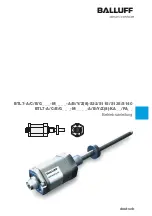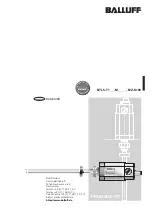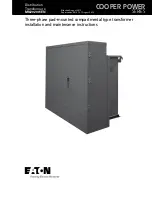
0
Check the bottoms of both the saddle slot and saddle. They
should be flat and straight. If all things mentioned above are
correct, and there still is a balance problem, try the following
simple modification:
SADDLE EDGE MODIFICATION-
WHEN THERE IS STRING BALANCE AND SIGNAL
OUTPUT PROBLEMS DO THIS MODIFICATION TO THE
SADDLE.
USING SANDPAPER OR FILE, SHAPE BOTTOM EDGES AT
LENGTH OF THE SADDLE TO LOOK LIKE THIS.
NO MORE THAN 0,5 mm SHOULD BE TAKEN AWAY.
11.7 Other notable causes for balance problems
• Check string angles behind the saddle. They should be about
the same behind every string. If the angle is too low, the string will
not put enough pressure on the transducer and that may cause
balance problems - usually higher output from the corresponding
string. To deepen the angle, you can, for example, file a wedge-
shaped groove on the bridge pinhole so that the string will have
deeper angle behind the saddle
• With some instruments the outer most strings are too close to
the edge of the saddle, causing balance problems to these strings.
It may happen that the E string at the end of the UST does not
come as loud as other strings. In this case, make another, shallow
hole (not all the way through) at that end of the saddle cavity and
move the pickup so the tip of the UST goes in the hole. If nothing
else helps, you should machine the saddle slot longer and use a
new longer saddle.
• Balance problems may also occur with some string sets, for
example with classical guitars the G-string may cause problems.
• Another somewhat common cause for balance problems is the
movement of the guitar top as it “lives” and moves especially during
transport or by change of season when the humidity changes.
Because of this the bottom of the saddle slot could become arched,
not straight, as the top becomes more or less arched. By making
the saddle flexible this problem can be avoided.
11.8 Other problems
If you notice any other problems, please contact the dealer,
distributor or manufacturer, for help.
11. CUSTOMER FEEDBACK
If you have any comments, positive or negative, about any B-Band
product, please do not hesitate to contact B-Band.
12. A2 SPECIFICATIONS
S/N ratio: Greater than -90 dB
Distortion: 0,05 %
Frequency response (both channels): 50 Hz - 40 kHz (-3 dB)
Low-cut slope (both channels): -6 dB/octave
Ch 1 voltage gain: +27 dB
Ch 2 voltage gain: 0 / +27 dB
Ch 1 input impedance: 50 M
Ω
|| < 10 pF
Ch 2 input impedance: 20 M
Ω
(2.2 k
Ω
with mic phantom on)
Output impedance (both channels): 1 50
Ω
Nominal output level (both channels): -10 dB u (0.245 Vrms)
Mic bias voltage: 9 V through 2.2 k
Ω
Preset treble enhancer boost: +3 dB @ 6.3 kHz; +5 dB @ 1 4 kHz (when
on)
Power supply: 9-volt battery (not included)
Current consumption: 1 .5 mA typical (2 mA with mic)
Connections: Transducer inputs, 2.54 mm / .10” header; Output, 6.3 mm
/ 1/4” jack
Weight (with accessories): 50 g
Dimensions (incl. jack): W 32 mm / 1.25”, H 18 mm / .70” , L 82 mm /
3.20”
String
Saddle
(side view)
Bridge
(side view)






























